The recent launch of the Apple iPhone 14 series catapulted “always-on display” into consumer consciousness in a big way. Although it’s new to Apple devices, the technology has been part of the Android world for years. But what is it exactly, and how does it affect battery life? Our DXOMARK Display and Battery experts investigated to understand better the impact on autonomy of always-on technology.
The display is a high power-consuming part of a smartphone. Because of this, most smartphone displays turn off after a relatively brief period of inactivity. The “always-on” feature lets users see certain kinds of information, such as the time, without having to fully wake up the phone.
DXOMARK recently asked users in a survey* what they thought of the always-on feature, and 54% of the respondents said they found the feature useful, while 46% didn’t think it was particularly useful.
The convenience of having the screen illuminated at all times, however, may come at the expense of battery life, and that is one of the main things our engineers wanted to find out. So they tested the brightness and the power consumption of the always-on displays on four leading devices — Apple iPhone 14 Pro Max, Google Pixel 7 Pro, Samsung Galaxy S22 Ultra (Exynos), and Xiaomi 12S Ultra — for a fair comparison.
Our tests
To run our battery measurements, we tested all four smartphones for at least two days under the same conditions inside a Faraday cage at a temperature of around 22°C (71.6°F), with ambient light at 50 lux, and battery power between 20% and 80% (levels at which the battery gauge is most stable). Phone settings were also the same across the board:
- ·Airplane mode on
- Wi-Fi, data, Bluetooth, location services (etc.) off
- Auto brightness on
- Adaptative refresh rate on
·All devices used a gray background (on the standard screen, not specifically for always-on), but this only affected the iPhone, which displays its background dimly when the always-on mode is activated
To run the display measurements, we used a Radiant imaging colorimeter to map the always-on interface and based our computations on the maps.
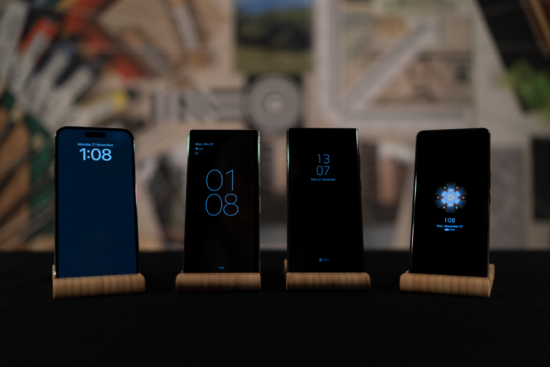
Battery measurements
The results of our battery tests revealed that autonomy was largely impacted by this always-on screen feature, draining the battery about 4 times faster! The battery will last roughly 100 hours in idle when activating the feature, instead of 400 if the feature is deactivated. Google Pixel 7 Pro had the best autonomy of the four devices, lasting 139 hours when activating its always-on screen. Interestingly enough, smartphones with the best autonomy in idle also showed the worst autonomy when switching on always-on screen. Is it too much confidence in their battery that led manufacturers to spend less time optimizing this mode? Maybe.
At DXOMARK, in addition to autonomy measurements, we compare the current drains, in milli-Amps(mA), which is the ratio of battery capacity (mAh) divided by the autonomy (h). This metric measures the speed at which a specific usage drains the battery and evaluates the performance of the platform itself, regardless of the battery capacity. As shown in the following table, the iPhone is the most optimized and keeps its discharge currents low in all situations. But the differences with the competition are rather small, with discharge currents around 10mA in idle screen off, and about 36mA with always-on screen, except for the Xiaomi 12S Ultra, which drains the battery a lot quicker at 47.3mA. Why? Some explanations can be found in the analysis by our Display experts.
Display measurements
As for the results of our display brightness tests, the iPhone 14 Pro Max and the Xiaomi 12S Ultra were the brightest among the four devices by quite a large margin. But the difference is major when it comes to how the screen is lit up. Indeed, the Apple iPhone 14 Pro Max lights up the full screen, while the Samsung and the Google devices only light the pictogram. The reason why the Xiaomi 12S Ultra has a very high maximum and average brightness is that it shows a very bright symbol in always-on mode, in addition to the time of the day.
Another important point is that all these devices use OLED screen technology, which is more energy efficient because black areas of the display, for example, do not consume any power. In contrast, LCD technology always consumes energy, which is why it is not compatible with always-on mode. Therefore, it is expected that brighter devices have higher consumption. Note that we were unable to run specific measurements on the variable refresh rate since the luminance is really low in auto mode. But the refresh rate might have an impact on battery life depending on the way it has been set by each manufacturer.
Concluding our measurements, we observed that even though the iPhone provided a bright screen on average, its power consumption was the lowest, indicating that the Apple engineers did a very good job of optimizing efficiency. The Google and the Samsung showed similar power consumptions, but with an always-on screen experience that was a lot less demanding: Only small parts of the screen were lit, and the maximum brightness was kept low. They both showed similar discharge currents as the iPhone, while displaying a much dimmer screen.
Finally, the third Android device, the Xiaomi 12S Ultra, showed the highest battery drains when the always-on feature was on, and although its average brightness was similar to the iPhone’s, the battery drains can be explained by its very bright pixels localized on its distinctive pictogram. Its maximum brightness was by far the highest.
Ultimately, the resulting user experiences in terms of autonomy were quite similar, considering that the Android devices have larger battery capacities than the iPhone.
Room for further optimization
Apple was late to join its peers in offering an always-on display feature, but as with essentially every feature the company launches, its engineers thoroughly studied how to optimize the user experience by making the most of its hardware and operating system. The always-on experience on Android phones, which have had this feature for a while, is not quite on par with the iPhone’s, either offering a nearly similar or worse battery experience. The iPhone 14 Pro Max’s performance shows that further optimization is possible for Android phones as well.
* DXOMARK survey conducted on social media (Twitter and LinkedIn) from November 30 to December 12, 2022; results are based on responses from 222 people.


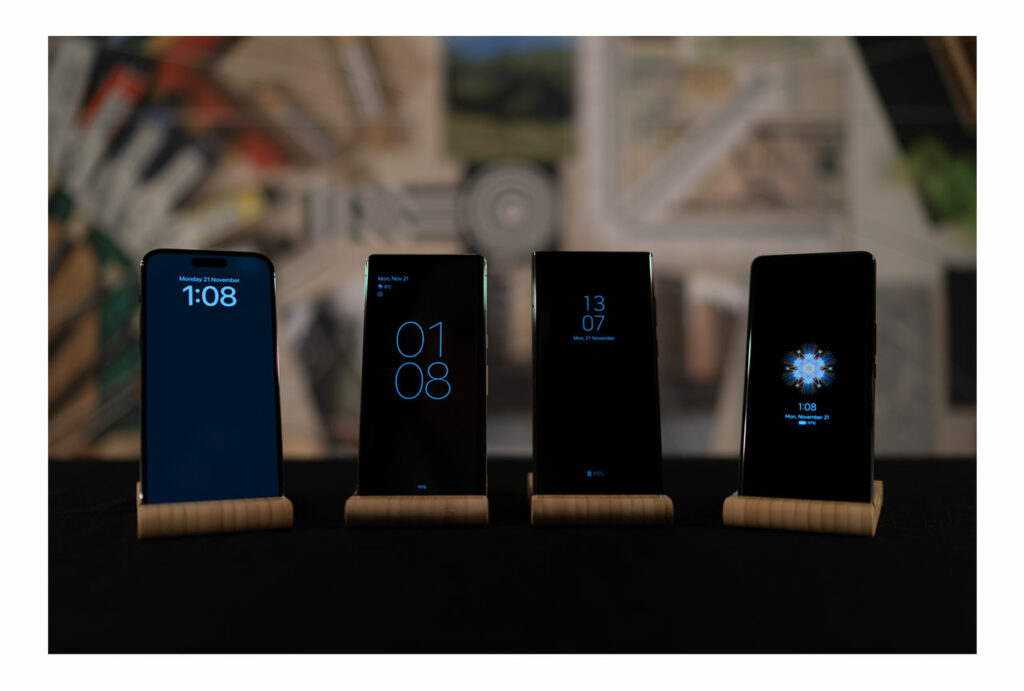
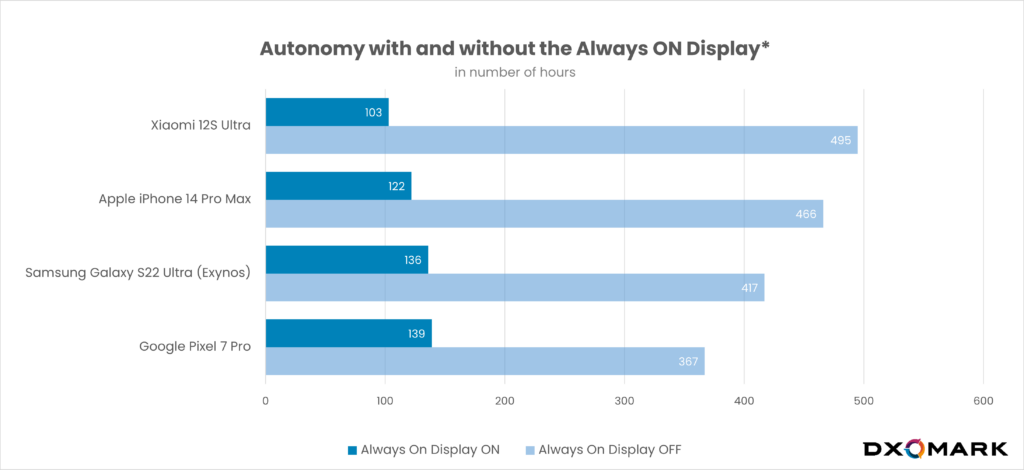
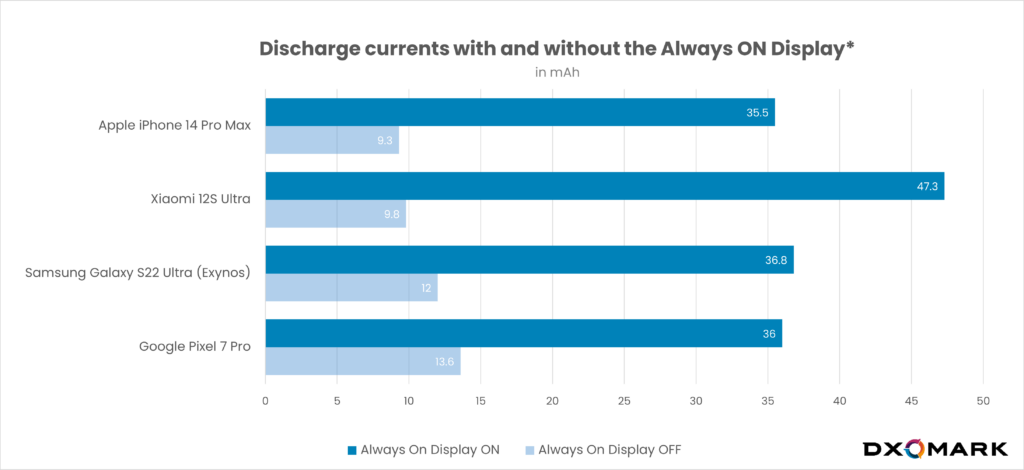
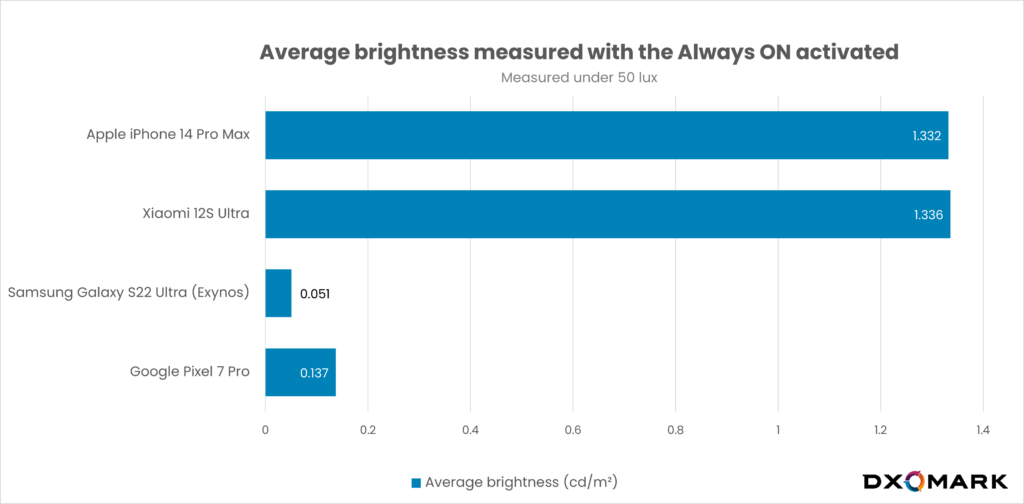
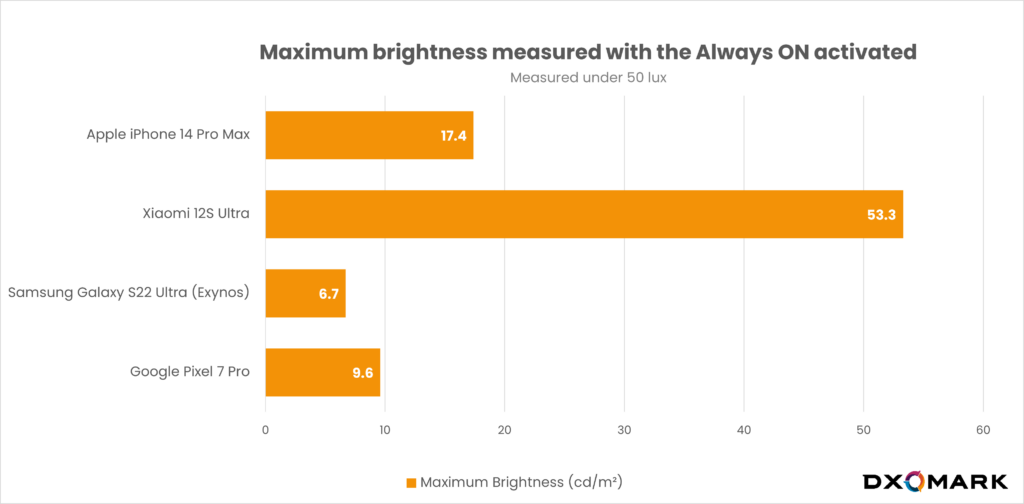
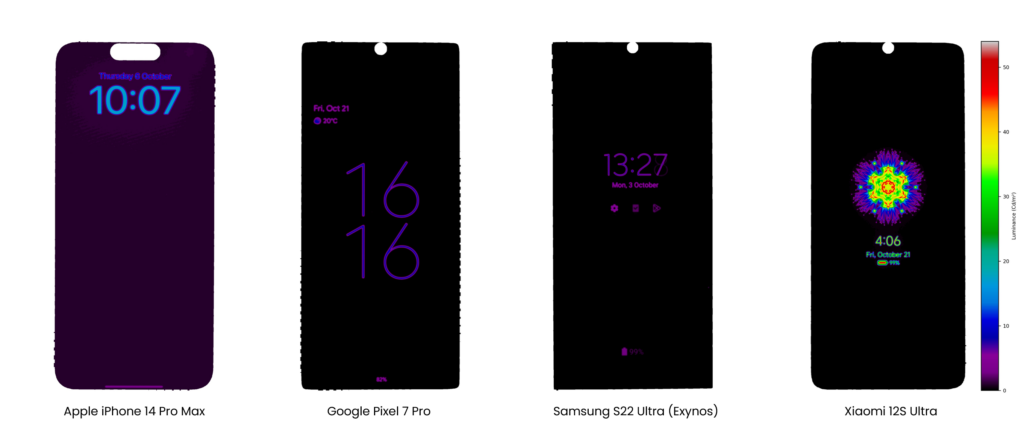
DXOMARK encourages its readers to share comments on the articles. To read or post comments, Disqus cookies are required. Change your Cookies Preferences and read more about our Comment Policy.